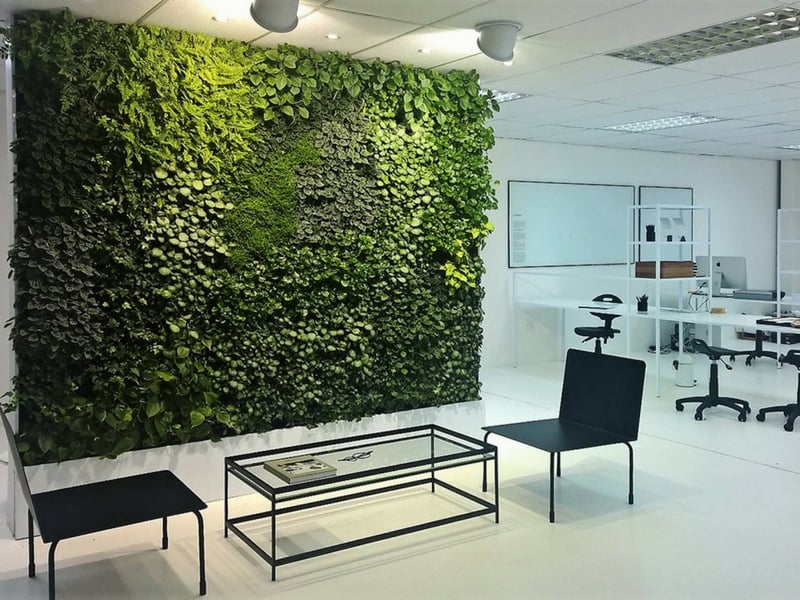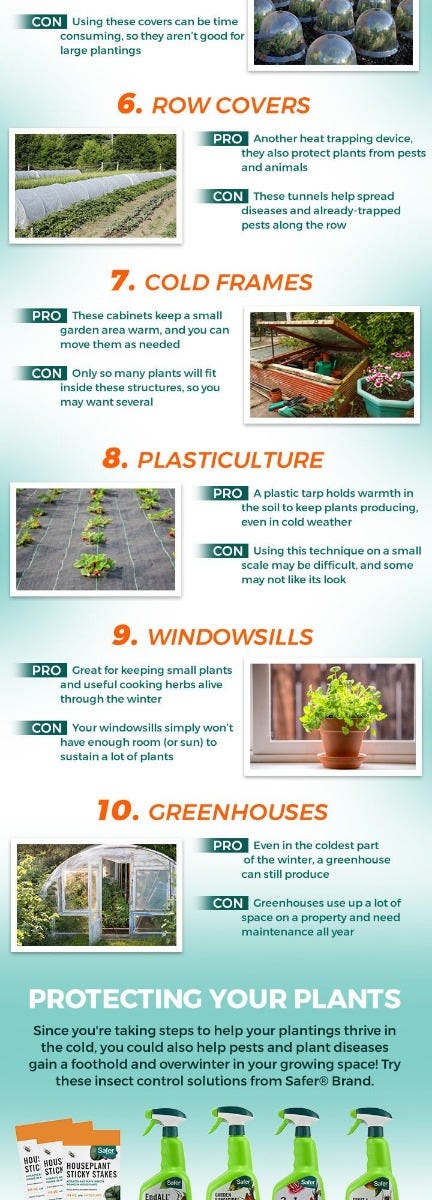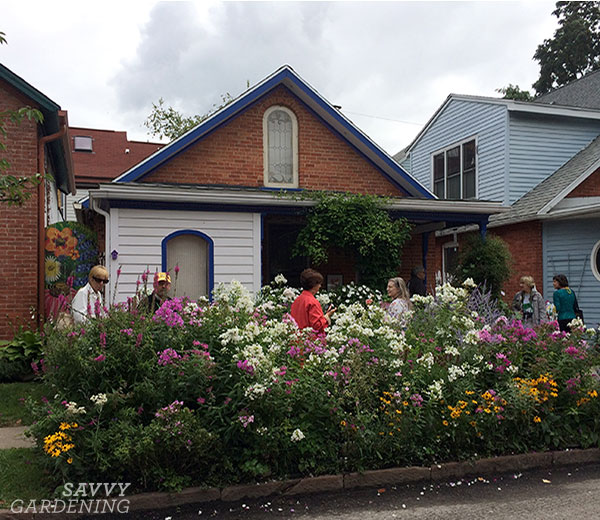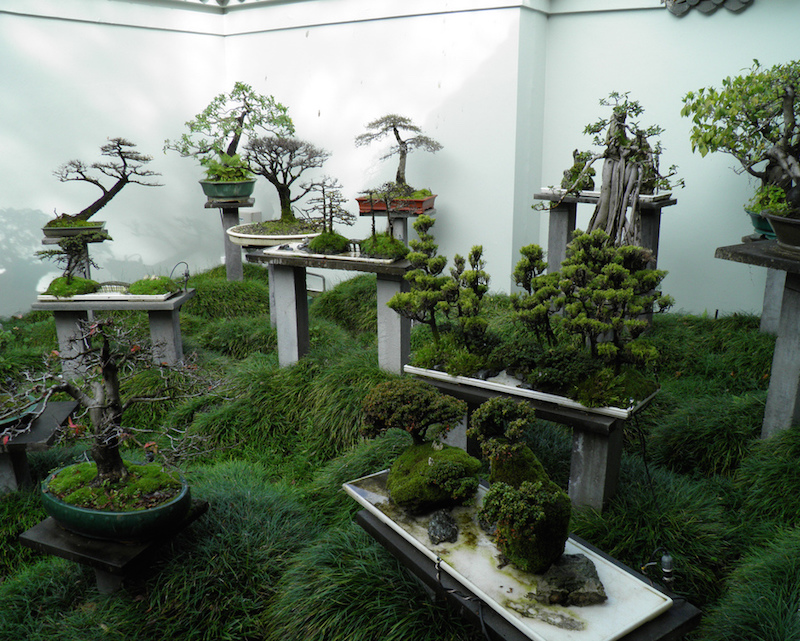Are you a renter who dreams of having a lush, green garden but feels limited by the constraints of your temporary living situation? Vertical gardening may just be the solution you’ve been searching for. With a growing trend towards urban living and limited outdoor space, vertical gardening offers a practical and creative way to bring the beauty of nature indoors. In this article, we will explore how vertical gardening can be a temporary solution for renters, providing them with all the joys of gardening without the commitment of a traditional garden. Discover the endless possibilities of transforming your rental space into a verdant oasis.
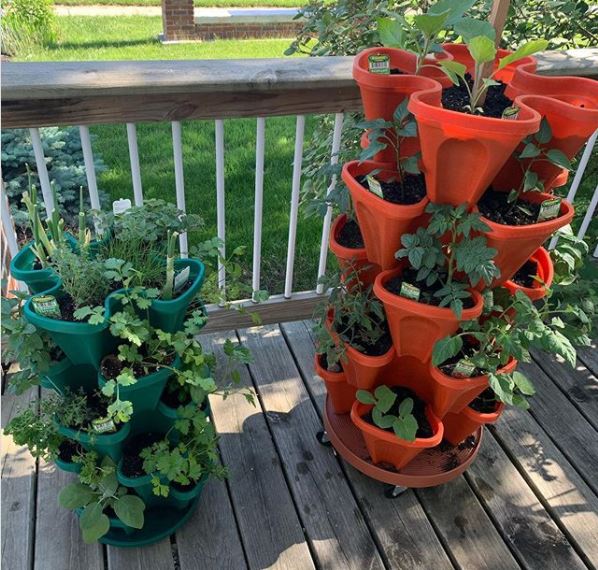
1. Benefits of Vertical Gardening in Rental Spaces
1.1 Maximizing limited space
In rental spaces, where outdoor areas may be limited, vertical gardening offers a practical solution to make the most of the available space. By utilizing vertical surfaces such as walls, balconies, and windowsills, you can create a lush garden even in a small area. This allows you to satisfy your green thumb and enjoy the beauty of plants, even in a limited space.
1.2 Enhancing aesthetic appeal
One of the greatest advantages of vertical gardening is the aesthetic appeal it brings to rental spaces. Vertical gardens create a vibrant and visually appealing environment, adding a touch of natural beauty to any setting. With carefully chosen plants and creative arrangements, you can transform the blank walls or empty corners of your rental space into a stunning oasis.
1.3 Growing a variety of plants
Vertical gardening provides the opportunity to grow a diverse range of plants in a limited space. You can cultivate a mix of flowers, herbs, vegetables, and even fruit-bearing plants. With a well-planned vertical garden, you can enjoy an array of colors, scents, and flavors, all within the confines of your rental space. Whether you have a sunny balcony or a shaded hallway, you can find suitable plants that thrive in different light conditions.
1.4 Providing privacy and shade
Vertical gardens can also serve practical purposes such as providing privacy and shade in rental spaces. By strategically placing taller plants or incorporating climbing vines, you can create natural barriers that shield your outdoor area from prying eyes. Additionally, the foliage of vertical gardens can help to filter sunlight, offering a cool and shaded spot to relax during hot summer days.
2. Challenges of Vertical Gardening in Rental Spaces
2.1 Limited access to sunlight
One of the main challenges of vertical gardening in rental spaces is the limited access to sunlight. Depending on the orientation and location of your rental unit, the amount of direct sunlight your plants receive may be insufficient. This can hinder the growth and health of certain sun-loving plants. It is important to carefully consider the lighting conditions of your space before selecting plants for your vertical garden.
2.2 Restrictions on permanent installations
Rental agreements often come with restrictions on permanent installations, which can pose challenges for vertical gardening. Landlords may prohibit drilling into walls or making permanent modifications to the property. This limits the options for installing structures that support vertical gardens. Renters need to be mindful of these restrictions and seek temporary solutions that can be easily removed without causing damage to the property.
2.3 Watering and drainage concerns
Watering and drainage can be a concern when practicing vertical gardening in rental spaces. Due to the vertical arrangement of plants, watering and ensuring proper drainage can be more challenging compared to traditional horizontal gardens. Overwatering can lead to water damage, while inadequate drainage can result in stagnant water and root rot. Finding effective ways to water and manage drainage is essential for the health of your vertical garden.
2.4 Weight limitations
Weight limitations are another factor to consider when practicing vertical gardening in rental spaces. Wall-mounted or freestanding structures that support vertical gardens can impose weight restrictions, particularly in apartments or buildings with weak construction. It is important to calculate and monitor the weight load of your vertical garden to ensure the safety and stability of your rental space.
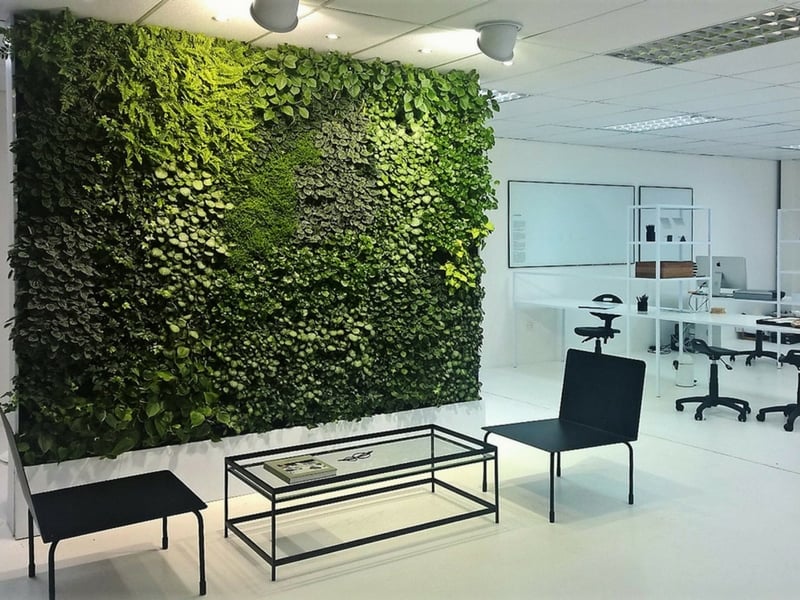
3. Types of Vertical Gardening Systems for Rental Spaces
3.1 Freestanding Structures
Freestanding structures are versatile options for vertical gardening in rental spaces. They do not require permanent installation and can be easily moved or disassembled as needed. Some popular freestanding structures include trellis systems, vertical planters, and hanging baskets.
3.1.1 Trellis Systems
Trellis systems are ideal for growing climbing plants such as ivy, jasmine, or morning glory. These systems consist of lattice panels or frames that provide support for vines to climb. Trellis systems can be leaned against walls, placed in pots, or attached to balconies, offering a customizable solution for vertical gardening.
3.1.2 Vertical Planters
Vertical planters are vertical gardens that feature multiple pockets or compartments for planting. These planters can be freestanding or wall-mounted, providing a unique way to display a variety of plants in a compact space. Vertical planters are available in various designs, from stacked containers to modular systems, allowing you to create a custom vertical garden to suit your rental space.
3.1.3 Hanging Baskets
Hanging baskets are a classic choice for vertical gardening in rental spaces. They can be suspended from hooks, railings, or overhead structures, adding a dynamic and decorative element to your garden. Hanging baskets are suitable for a wide range of plants, from colorful flowers to trailing vines.
4. Suitable Plants for Vertical Gardening in Rental Spaces
4.1 Climbing plants
Climbing plants are excellent choices for vertical gardening in rental spaces. They add vertical interest and can be trained to grow on trellises, walls, or support structures. Popular climbing plants include clematis, honeysuckle, and trumpet vine. Before selecting climbing plants, consider the lighting conditions and growth requirements of your rental space.
4.2 Compact plants
Compact plants are ideal for vertical gardens in small rental spaces. These plants have a more controlled growth habit and take up less space compared to their sprawling counterparts. Examples of compact plants suitable for vertical gardening include pothos, jade plant, and snake plant.
4.3 Shade-tolerant plants
If your rental space lacks direct sunlight, opt for shade-tolerant plants for your vertical garden. Ferns, peace lilies, and begonias are popular choices that thrive in low-light conditions. These plants can add lushness and vibrant foliage to your vertical garden, even in shady areas.
4.4 Edible plants
Growing edible plants in your vertical garden can be a rewarding experience, especially for renters who enjoy cooking or gardening. Compact herbs like basil, oregano, and mint can be grown vertically, providing a fresh supply of flavorings for your culinary adventures. Additionally, cherry tomatoes, peppers, and strawberries are well-suited for vertical gardens and offer delicious homegrown treats.
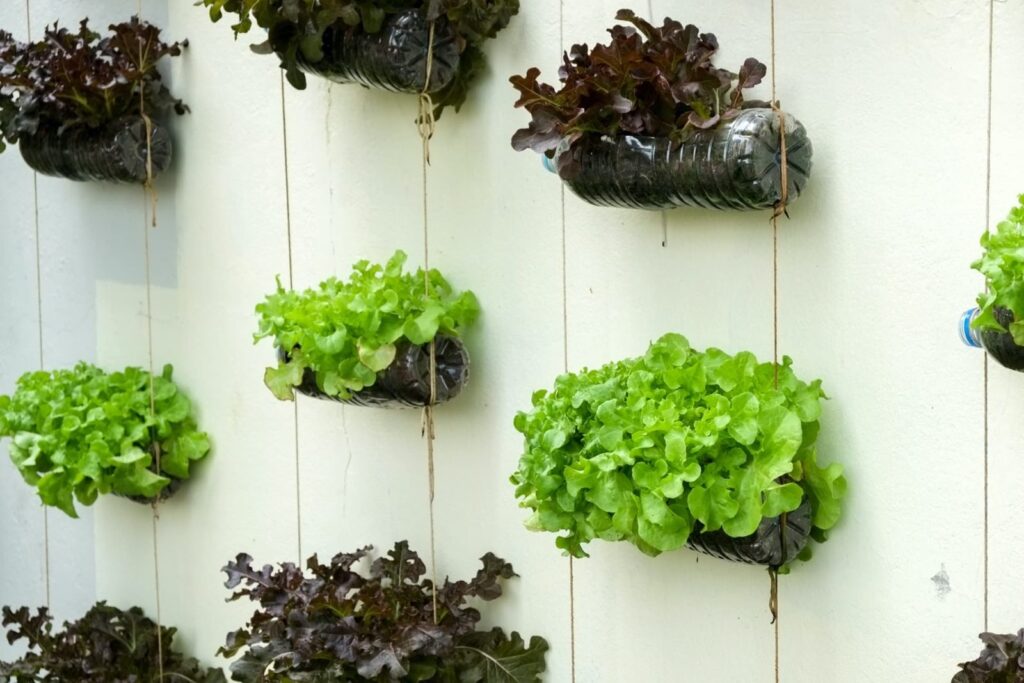
5. Techniques for Successful Vertical Gardening in Rental Spaces
5.1 Proper soil preparation and fertilization
Ensure proper soil preparation by choosing a well-draining soil mix suitable for your plants. Incorporate organic matter and fertilizers to provide essential nutrients for healthy growth. Regularly monitor the soil moisture and adjust fertilization accordingly.
5.2 Choosing the right containers and supports
Select containers that are appropriate for your vertical garden, considering factors such as size, material, and drainage capabilities. Use sturdy supports, such as trellises or wall-mounted brackets, that can securely hold the weight of the plants. Be mindful of weight limitations and ensure the structural integrity of your rental space.
5.3 Managing watering and drainage
Implement a watering system that suits the needs of your vertical garden. This may involve using drip irrigation systems, self-watering planters, or manually watering the plants. Monitor and adjust watering frequency according to the moisture requirements of your plants. Ensure proper drainage to prevent waterlogging and root rot.
5.4 Regular maintenance and monitoring
Maintain your vertical garden by regularly pruning, trimming, and removing dead or damaged plant parts. Monitor for pests and diseases, promptly addressing any issues that arise. Regularly check the stability and condition of the structures supporting your vertical garden to ensure safety and prevent accidents.
6. Temporary Vertical Gardening Ideas for Rental Spaces
6.1 Container gardens on balconies or windowsills
Utilize balconies or windowsills as spaces for container gardens. Choose compact plant varieties and position the containers strategically to maximize sunlight exposure. Consider using hanging baskets or vertical planters to save space and add visual interest.
6.2 Hanging planters indoors
Indoor vertical gardens can be created using hanging planters suspended from hooks or ceiling-mounted structures. This allows you to grow plants in areas with limited floor space, such as kitchens or living rooms. Select plants that thrive indoors, such as pothos, spider plants, or ferns.
6.3 Mobile vertical garden carts
Mobile vertical garden carts offer flexibility and portability for renters. These carts are equipped with shelves or racks that can hold multiple plants. They can be easily moved around to optimize sunlight exposure or accommodate changing interior layouts.
6.4 Wall-mounted modular systems
Wall-mounted modular systems are an efficient way to create vertical gardens without drilling into walls. These systems consist of adjustable panels or grids, allowing you to arrange and rearrange plants as desired. They are lightweight and easy to install, making them suitable for rental spaces.

7. Tips for Renters Starting a Vertical Garden
7.1 Review rental agreements and seek approval
Before starting a vertical garden in your rental space, review your rental agreement and consult with your landlord or property manager. Seek their approval and clarify any restrictions or guidelines related to gardening activities.
7.2 Opt for portable and lightweight systems
Choose portable and lightweight vertical gardening systems that can be easily assembled, disassembled, or moved. This ensures flexibility and allows you to adapt your garden to different rental spaces or relocate it if needed.
7.3 Use removable hooks or brackets for wall-mounted gardens
If you plan to create a wall-mounted vertical garden, use removable hooks or brackets that do not cause permanent damage to the walls. Ensure these attachments can securely hold the weight of your plants and structures.
7.4 Research plant care and maintenance requirements
Familiarize yourself with the care and maintenance requirements of the plants you choose for your vertical garden. Different plants have varying water, light, and fertilization needs. Understanding these requirements will help ensure the success and longevity of your vertical garden.
8. Potential Safety Considerations for Vertical Gardening in Rental Spaces
8.1 Secure installations to avoid accidents
To prevent accidents, ensure that any installations or structures supporting your vertical garden are securely attached and stable. Be mindful of the weight load and the potential risks associated with instability.
8.2 Ensure proper support for heavy structures
If you plan to incorporate heavy structures, such as large trellises or multi-tiered planters, ensure they are adequately supported. Consider using additional braces, supports, or reinforcements to maintain stability and prevent toppling.
8.3 Be mindful of water runoff and potential damage
Take precautions to prevent water runoff from your vertical garden, especially if you have neighbors or reside above other units. Ensure proper drainage to avoid water damage to your rental space or neighboring properties.
8.4 Take steps to prevent pests and diseases
Manage pests and diseases by implementing preventive measures such as regular cleaning, pruning, and proper plant care. Inspect your plants frequently for signs of infestation or disease, and take immediate action to mitigate any potential issues.
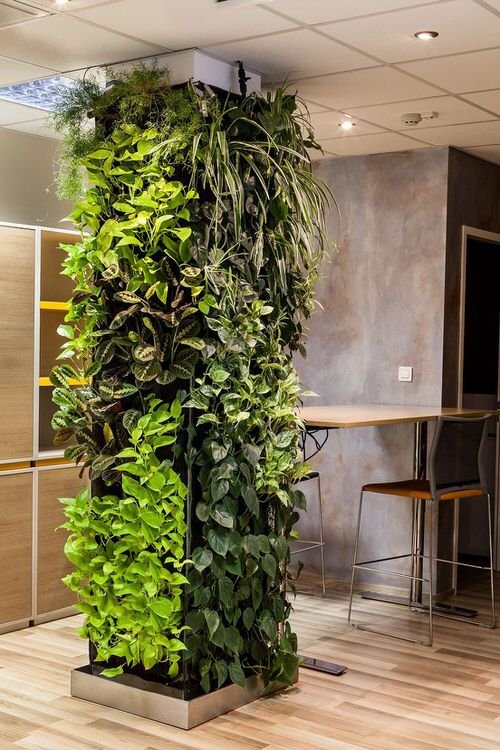
9. Maintenance Tips for Vertical Gardens in Rental Spaces
9.1 Regular pruning and trimming
Maintain the health and appearance of your vertical garden by regularly pruning and trimming the plants. This promotes airflow, reduces the risk of overcrowding, and encourages new growth. Remove any dead, damaged, or diseased plant parts to prevent the spread of pests and diseases.
9.2 Monitoring and adjusting watering
Monitor the moisture levels of your vertical garden and adjust the watering frequency as needed. The environmental conditions and plant types will influence the watering requirements. Check the soil moisture regularly, considering factors such as temperature, humidity, and plant growth stages.
9.3 Providing adequate light and fertilization
Ensure your vertical garden receives adequate light by positioning the plants in areas with suitable sunlight exposure. If natural light is limited, supplement with artificial grow lights. Regularly fertilize your plants with a balanced fertilizer to provide essential nutrients for healthy growth.
9.4 Dealing with pests and diseases
Implement proper pest and disease management techniques to safeguard the health of your vertical garden. Monitor your plants for signs of infestation or disease, such as yellowing leaves, wilting, or unusual spots. Depending on the issue, use organic or chemical treatments to address the problem promptly.
10. Inspiration for Vertical Gardens in Rental Spaces
10.1 Creative plant arrangements
Experiment with creative plant arrangements to personalize your vertical garden. Combine plants with varying heights, textures, and colors to create visually stunning displays. Consider using trailing plants, cascading flowers, or contrasting foliage for added visual interest.
10.2 Upcycled or repurposed containers
Get creative with your choice of containers by using upcycled or repurposed items. Transform old buckets, wooden crates, or even shoe organizers into unique planters. This adds a touch of creativity and sustainability to your vertical garden.
10.3 Incorporating art and design elements
Enhance the aesthetics of your vertical garden by incorporating art and design elements. Hang decorative wall art, install mosaic tiles, or place sculptures strategically within your vertical garden. This adds a whimsical and personalized touch to your rental space.
10.4 Vertical herb or salad gardens
Create a functional and practical vertical garden by dedicating a section to growing herbs or salad greens. Utilize vertical planters or hanging baskets to grow fresh herbs like basil, parsley, or rosemary. Enjoy the convenience of having your own herb garden for culinary inspiration in your rental space.
Vertical gardening offers renters the opportunity to maximize space, enhance aesthetics, and grow a variety of plants in their limited backyard or balcony. While challenges such as limited sunlight and restrictions on permanent installations exist, renters can overcome these obstacles by utilizing freestanding structures, choosing suitable plants, and implementing proper techniques for successful vertical gardening. By following maintenance tips, renters can ensure the health and longevity of their vertical gardens. Furthermore, renters can explore temporary solutions like container gardens, hanging planters, mobile garden carts, and wall-mounted modular systems to create stunning vertical gardens in rental spaces. By considering safety considerations, seeking landlord approval, and researching plant care requirements, renters can embark on their vertical gardening journey with confidence. With the right inspiration and creative flair, renters can transform their rental spaces into vibrant, green oases using vertical gardening techniques. So start planting and enjoy the beauty and benefits of vertical gardening in your rental space.

